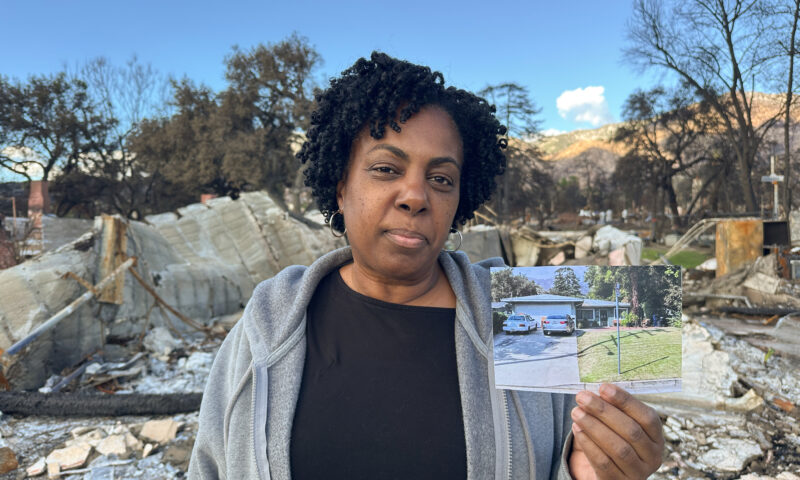Culture & Media
Union Staffers: Time’s Up, L.A. Times
The L.A. Times newsroom remains in a state of siege. Tronc has established an alternative editorial team for its shadowy “Los Angeles Times Network,” and has declined to explain to Times staffers what its intentions are for this new enterprise.

Workers at the Washington Post won their first union contract in 1937, the year the Hindenburg crashed and burned. New York Times staffers got theirs around the time the Japanese attacked Pearl Harbor. In the first years of the 20th century, the owners of the Los Angeles Times not only crushed union opposition at the paper, but turned their hometown into the most rabidly anti-union big city in America. For over 100 years, the Los Angeles Times‘ newsroom remained a bulwark against organized labor, maintained by below-the-masthead editors and reporters, as well as by management.
So why did L.A. Times staffers choose to unionize last month by a vote of 248-44?
During her 41 years as a journalist and three decades at the Times, Bettina Boxall had never worked in a unionized newsroom. Until last year, the veteran Pulitzer Prize-winning reporter on environmental and water issues would have kept working at an open shop if given a choice. “My father was a military officer, and no members of my family were ever in a union,” she tells me, “and watching them from afar — unions haven’t had a great reputation.”
When Boxall began at the Times, it was certainly a patriarchy, but a patriarchy rolling in profits and exceedingly generous when it came to employee compensation and job security.
In recent years, corporate mismanagement and merciless cost-cutting began to soften Boxall’s stance. Now the bosses had nothing to offer and seemed to be taking everything away. Accrued vacation time? Gone. The 401(k) plan? Raided by a profane real-estate mogul who drove the company into bankruptcy. Layoffs and buyouts pared down the newsroom from 1,200 to around 400 – sending thousands of years of journalistic experience out the door.
These depredations brought long-standing inequities into starker relief, and sharpened focus on new ones. “Women are paid less than men,” Boxall says. “I know that for a fact. And the long-standing Metpro program [for young minority journalists] has turned into a source of cheap young labor.”
The climate of oppression and fear at the paper came not only from Chicago-based Tronc, the newspaper conglomerate that now owns the Times, but from the top of the masthead. More than a year ago, in Los Angeles magazine, I chronicled the excesses of former editor and publisher Davan Maharaj — the paranoia, the interference with investigative pieces and behavior that had helped turn the newsroom into a hostile work environment for women.
Until he was placed on unpaid leave because of allegations about past sexual improprieties, Ross Levinsohn, the Times’ CEO and Maharaj’s successor in the publisher’s chair, pursued an agenda of click-baiting at all costs. To implement it, he hired Lewis D’Vorkin, who during his career at Forbes and other publications had earned the sobriquet “Prince of Darkness.” D’Vorkin held the post three months until Tronc removed him, following scathing coverage of his misrule. “We’d almost become like an abused family,” Boxall says of the Times newsroom. “We wouldn’t react in an overt strong way. We were passive in the face of anything they did to us.”
At her first organizing rally late last summer, Boxall took the podium and declared to her beaten-down colleagues that she had never signed a unionization card, but she was going to sign one that night. She would become one of the chief organizers of the effort, teaming with younger colleagues like 30-year-old data journalist Anthony Pesce, who had made the first call to the NewsGuild-Communication Workers of America in 2016, and had championed the unionization drive from its inception.
Boxall believes that the massive job cuts of the past two decades actually made victory easier – the union advocates only had to convince a majority of 400 staffers, not of 1,200. The chronic instability of newsroom and business leadership – with publishers and editors coming in to make big changes and then packing up their offices seemingly as soon as they arrived — may have made the paper more dysfunctional, but it also ensured that there would be no company standard bearer in the building with the kind of longstanding authority and solid workforce relationships that can be effective at countering a unionization drive.
For their part, the Tronc executives back in Chicago proved no more competent at repulsing a union effort than they had been at choosing leaders to run the Times. It certainly didn’t help that Lewis D’Vorkin put his name on some of the anti-union pleas emailed to a staff that largely loathed him.
The newsroom remains in a state of siege. Tronc has established an alternative editorial team for its shadowy “Los Angeles Times Network,” and has declined to explain to Times staffers what its intentions are for this new enterprise. Many believe it may be used to undermine or bypass the newly unionized workforce. Some say that the Times’ journalistic integrity and their own livelihoods will remain under threat as long as Tronc controls the paper.
Nevertheless, the establishment of the L.A. Times Guild seems to have somewhat dissipated the air of futility, anger and disgust that clouded so many of my earlier conversations with staffers. Boxall likens the feeling to what countless victims of sexual harassment must have experienced during the past year – finding strength in numbers as they confront their abusers after so much silence and disregard.
“We care about the institution of the L.A. Times,” Boxall says, “and we’re concerned about the revolving door and an ownership only interested in profits, not civic duty. Well, time’s up. It’s kind of the equivalent of the #MeToo movement. We’ve had enough of this.”
Copyright Capital & Main

-

 Pain & ProfitNovember 3, 2025
Pain & ProfitNovember 3, 2025Despite Vow to Protect Health Care for Veterans, VA Losing Doctors and Nurses
-

 Column - State of InequalityNovember 6, 2025
Column - State of InequalityNovember 6, 2025Congress Could Get Millions of People Off of SNAP by Raising the Minimum Wage, but It Hasn’t — for 16 Years
-

 Latest NewsOctober 29, 2025
Latest NewsOctober 29, 2025‘I’ve Never Seen Anything Like it.’ Aggressive ICE Raids Led One Man to Ask: Should I Self-Deport?
-

 Latest NewsOctober 31, 2025
Latest NewsOctober 31, 2025Pennsylvania Gas Producer Sues Capital & Main Over Its Reporting on Health Risks
-

 The SlickNovember 5, 2025
The SlickNovember 5, 2025The David vs. Goliath Story of a Ranching Family and an Oil Giant
-

 Latest NewsOctober 31, 2025
Latest NewsOctober 31, 2025People With Disabilities Struggle to Secure Accessible Housing After Disasters Like the L.A. Fires
-

 Column - State of InequalityOctober 30, 2025
Column - State of InequalityOctober 30, 2025Desperate Times: ‘If We Do Not Do This … There Will Be Tragedy After Tragedy.’
-

 StrandedNovember 7, 2025
StrandedNovember 7, 2025U.S. Deports Asylum Seekers to Southern Mexico Without Their Phones

